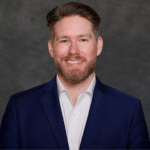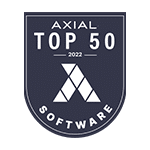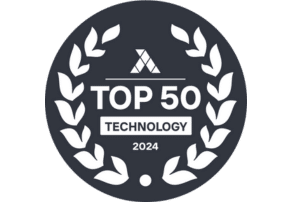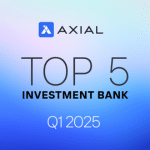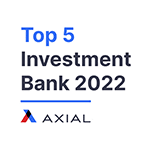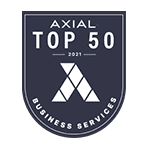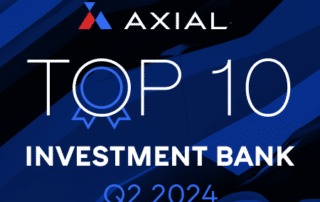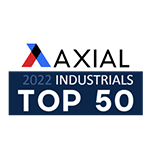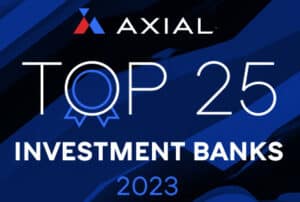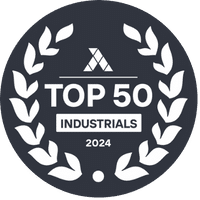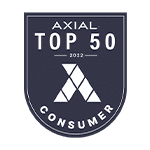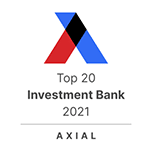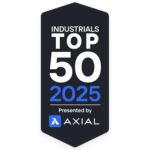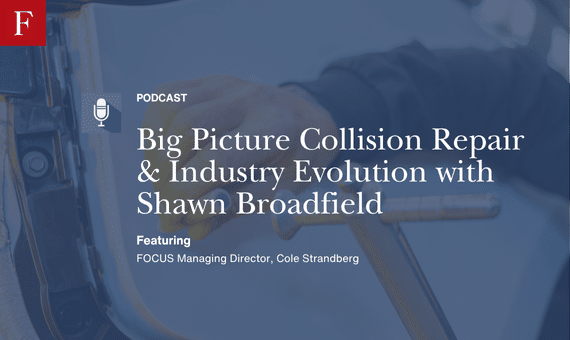
Big Picture Collision Repair & Industry Evolution with Shawn Broadfield
On this week’s episode, Cole Strandberg chats with Shawn Broadfield. With decades of executive leadership experience in the insurance and mobility sectors, including high-level roles at Allstate, TrueMotion, and beyond, Shawn brings an insider’s view into how carriers think, how innovation is reshaping our industry, and what it all means for the future of collision repair. In this conversation, they zoom out to examine the big picture — from claims technology and operational strategy to carrier-shop dynamics and what separates the best operators from the rest. Whether you’re a shop owner, an insurer, or just someone curious about how all the pieces fit together, this is a masterclass in industry evolution.
Cole Strandberg: Looking forward to an awesome conversation here. Kind of all about that DRP and insurance landscape. Before we dive in, I think it’s important that we learn more about you. I’ve given the audience a little bit of your background at the top of the show, but would love to hear your story and your career arc in your own words.
Shawn Broadfield: Terrific, thanks. Yeah, real quickly, I don’t want to do it, give it too much time, but it was a long career. 35 years at Allstate, a variety of roles, everything from finance to innovation to strategy, mostly on the claim side. And while I was over there, I actually spent some time running their DRP network called Sterling Auto Body and took Sterling Auto Body to places it hadn’t been before. Learned a lot from it. Actually coming out of that assignment provided a lot of ideas for some of the innovation that Allstate pursued later on during my career.
Cole Strandberg: So I’m gonna make us spend a little bit more time there because Sterling is famous. The, the management tree and the leadership tree that came out of that organization was top notch. Something that I discovered in our pre show call that I did not fully understand was the level of relationship between the insurer and the body shop there. Talk to us a little bit about that organization, that relationship and that experiment as a whole.
Shawn Broadfield: Yeah, it was an experiment for sure. I mean, we had never been done before. A direct ownership of a, of a body shop network from an insurer, a major insurer at that, you know, MO traditionally The, those kinds of relationships were in the DRP sense where you had, you know, direct relationships with a variety of body shops. We decided to purchase a network body shop to see what kind of efficiencies we could get out of a vertical integration play. And you know, a lot of good things came of it. I think we underestimated reaction and we perhaps overestimated just how difficult it can be to extract kind of this, I would call it the three legged stool from the relationship. The idea that you want to have great customer service, you want to do it at great quality and you want to do it very efficiently. And it’s just a hard thing between the insurer and the body shop to do. And there’s a variety of reasons for that. We can get into one being and it’s something that, you know, over the last 15 or 20 years, and by the way, it was almost 20 years ago I was involved with Sterling Auto Body. But some things haven’t changed. It is still quite fragmented out there. You know, there’s still constant, there’s concentrations of MSOs and concentrations of, you know, big players of body shops, but there’s also still a lot of mom and pops. I would classify it’s very inefficient use of resources not only by the insurers but by fleets, by others that might want to have access to that. And you know, it’s, it’s something that is still, you know, kind of wearing us down a little bit. And a lot of other things then come, come about over the last 20 years that have made it even more difficult. Things like technology, which I know we will talk about at some point. Goodness. Training and hiring and making sure that we can get the best technicians and people involved in this business. And what I’ve discovered being on both sides of the shop, so to speak, is that we all have the same goal in mind. You know, good quality, efficient and customers that are satisfied on an event that usually happens not very often in their, in their lives. And it’s, and it’s something they really don’t. I would argue most customers don’t have a view into how it, how it works. And it’s something that I think 20 years ago was, was the problem and it’s still the problem today. How do we, how do we make sure that this, this relationship, how do we make sure that this process that we all are involved in happens in a win, win, win situation?
Cole Strandberg: The win, win, win situation. I know we’re going to touch on that a fair bit. What an interesting worldview to be in that all state universe in the Sterling organization within that universe and seeing in real time how both sides operate, what the cause and effects are for a multitude of parties. And I think that’s super helpful for the rest of our conversation. Getting an understanding of where your worldview comes from and an enlightening experience. I have no doubt for the remainder of your all state career you were involved in the creation of some super cool programs and products. Talk to us a little bit about those as well.
Shawn Broadfield: Yeah, I mean coming out after Sterling, I actually it, you know, totally made sense. I’m a finance guy in claims, you know, and they asked me to work on some technology platforms so helped all state swap out what they called next gen, which was a, a swap out of their software processing platforms for processing claims and coming out of that. So you marry up what I thought saw in this relationship, this win, win, win potential relationship and what I saw and how internally we handled claims and how inefficient that was. You began, I began to formulate, me and my teams began to formulate some ideas around how could we make that win, win, win come alive. And you know, there’s a variety of programs and I would say innovations that we put in place that were on the fringes of that. But there’s one example that still to this day is out there and is a great example of how body shops, insurers and customers should feel the impact of technology going forward. It’s called something called Virtual Assist. I think we might have talked about it at another time, but Virtual Assist is a one to many virtual collaboration tool that Allstate invented. And we did it out of this idea that when I was running Sterling Auto Body, I would have a car up in the rack and I would pull off the bumper cover and I’d see that the reinforcement was damaged. I’d have to call the insurer, they’d have to send out a, an insurance adjuster to approve a supplement. And that took, I don’t know, one to two, sometimes three days for that, for us to get on the schedule for that insurance adjuster who went from shop to shop to get that approved. And it probably still happens today to some extent in the industry. But Virtual Assist was, and under that situation, I have to pull the car off the rack, set it aside. It’s a delay of one to two to three days for the, for the customer. It costs me money to set it aside. It costs the insurer money to send out an adjuster. And so with today’s, with Today’s technology tools, let’s just have an app, a button, you have an, everyone’s got an iPad or a phone and the, the, the, the, the technician there in the shop presses the button and immediately connects with an adjuster in a call center for example. And they are able to show them the additional damage. The adjuster pulls up the file electronically, is able to, to fix it or to address it and approve it and that car is still on the rack. Be able to get the part perhaps that, that day and be able to keep it moving through the line. A very efficient process for a, for a body shop saving tons of money. They, the customer gets their car back when promised. And because by the way, we promise, as you know in the body shop, we promise a certain date for that car to be repaired without really building in too much. Hey, I gotta pull, I found additional damage kind of thing. And the insurer saves money. They don’t have to send out an adjuster. It’s much cheaper to do it from a call center, a qualified adjuster by the way, in those call centers. And the cut and the customer’s happier. And so that’s the win, win, win. That’s using technology, that’s using this relationship of insure repair, that whole ecosystem. We belong to it all and we have this common customer and we can make it cheaper. And by the way, when you make it, when you make it, I don’t want to use the word cheaper. When you make it less expensive for the, for that ecosystem, that ecosystem then becomes less expensive to the consumer. And there is a lot of built in efficient inefficiency still today in that ecosystem. And you know, that was part of what I was trying to do in the last, you know, 10 years of my career with Allstate.
Cole Strandberg: Love it. And, and probably some solutions that you didn’t fully comprehend that the problems existed until your time at Sterling. So what, what an AM kind of crossover experience there now we could probably spend an entire episode talking about Sterling because that was a fascinating organization. One of the early scaling MSOs obviously would ultimately sell to a consolidator. How big were you at the time you were with Sterling? How many shops?
Shawn Broadfield: We were at about 65 shops in 15 markets. We were about a 250, close to $250 million in revenue. When I took it over. It was originally about 95% Allstate only business. I said that’s ridiculous. Anybody who’s running a business wouldn’t want to have every, you know, all their eggs in one basket by the time I left, we were about 60%, all state, something like that. And the rest was, you know, other. Other partners, other DRP partners. And yeah, we, we had probably close to 1400 employees, and we had opened up a couple of shops under me, but we weren’t growing in that regard yet. We were trying to actually fulfill our capacity that we had analyzed where we were at. So when I first took over, one of the first things, I asked the guys, I go, how much do you think we can produce per shot per, you know, per day? It was one of the common metrics, what we call throughput with quality with good customer service. And, you know, the answer was, we were producing. I’m going to make it up four cars a day. That was way below capacity. So when we, when I got back my capacity analysis, you know, on average, we could produce eight cars a day with quality, and that’s at max capacity. We know, we know manufacturers aren’t at that level. And if you get 70 or even 80% of that, you’re pretty much at full capacity. So we thought six cars a day per shop across the network was reasonable. Well, we were 50% below that or 33% below that. It was. There was a lot of work to do. And so, you know, by simply focusing in on relationships with insurers, not just Allstate. Allstate, by the way, even though we were at 60%, we were still at the same number of cars we were repairing for them at 95%. So we were able to add basically that 30% of capacity through, through the usage. And the, the shops were just humming. They were humming. They were at good, good capacity people. Our technicians were happy because they were making good money. Our general managers were happy because they were making bonuses. Our customers were happy because they were getting their cars on time and they were getting them fixed with quality. It was a interesting time and a learning for me that if you focus in on one or two really good things, really good blocking and tackling. I’m a football guy, so I got to use that term at some point.
You’re gonna win. You’re going to, you’re going to get, you know, 80% there. And it was, it was quite a time. And, you know, there’s a lot of people I’m, I’m still, I’m still in connection with, from that, from that era, from that organization that, you know, we were, we were having a lot of fun.
Cole Strandberg: Fascinating story. And again, we probably should have you back for an entire episode about the Sterling Experience, because that is so many amazing operators and leaders came from that organization, present company included. Now, you’ve been away, if my notes are correct, from the Allstate organization for about five years, but you have managed to keep an incredible finger on the pulse on what’s happening via consulting roles, board roles, things of that nature. So shifting from the past to today, what are the key factors from your vantage point, shaping the whole insurance and repair ecosystem right now?
Shawn Broadfield: Yeah, and it’s, you know, like I said before, I think part of this shift is gotten a lot of spotlight. Okay. I’m not saying it’s wrong. I just think it’s a lot of spotlight considering that there’s still some systemic issues within that ecosystem that, you know, still need to be addressed that in, in many cases, technology may or may not be able to handle. So technology is a big one. AI is the big buzzword. Certainly the technology of vehicles has gotten very complex. So the OEMs are, you know, it becomes very important. The, the, the qualifications of technicians to fix these vehicles, the Teslas of the worlds, for example. And, and, and then just the, the idea of, of, of data and what you’re going to do with that data, which, by the way, by the way, feeds AI so AI, AI automating the repair estimate. But people don’t. My perspective, the industry doesn’t really talk too much about the repair plan itself. And so that’s the blocking and tackling, that’s the meat and potatoes of repairing a vehicle is that plan. And AI right now hasn’t really addressed that. They’ve addressed the ability to, you know, get the, you know, we know that I need to replace that fender versus repair it. You know, I know this is a 2016 Honda Civic. It’s got the left, you know, quarter panel damage. I need to repair that. And what that. We know, we have that data. We can actually fill in line item s, you know, the lines on an estimate to build a repair plan. But there’s nobody really doing things like reviewing that repair plan, talking to the customer about that repair plan, and a customer, his voice, by the way, and there is no conversation around, you know, how does that, how does the feedback along the line come into play? So, for example, the technician I just described ripping off the bumper and you see a, you know, bumper reinforcement. AI hasn’t figured out how. Oops, we have this one exception that happened. How do we get, how do we bring that into play? I think it’ll eventually all happen. I think also the, the whole AI play will eventually give some credence to the efficiencies that need to happen in this ecosystem. The big players become perhaps, you know, more of the customer of that and the smaller players become then have, you know, basically less of a say so in that part of the ecosystem and, you know, fortunate, unfortunately or fortunately, you know, customers base their, their service needs on a very small radius within where they live. So there is the outside of the urban areas where customers, you know, still want to have access to good quality repairs. And we don’t want to lose all of that technology. AI big. The technology of cars is big. And it requires other things that we’re going to have to talk about that I go back to is this blocking and tackling, capacity analysis, training, the repair plan. I talked about. There’s a lot of things that technology either will highlight in a much greater light or they. I just don’t want them. I guess my point is I just don’t want them. The technology to be the thing. It’s part of the thing.
Cole Strandberg: Right on. Nope, Makes total sense. And I think you hit the nail on the head across a variety of points there. This series talking about insurance relationships, DRPs, this is a pretty polarizing topic. And so much of it is blocking and tackling and technology. So much of it is also relationship driven and relationship oriented. How has the relationship between carriers and shops evolved over, call it the last 5 to 10 years? And are we in a more or less collaborative environment?
Shawn Broadfield: Yeah, this is my take and I’m not as close to it as I once was, but I, you know, read here and talk to people. I think it’s, it hasn’t improved, but it hasn’t deteriorated a ton. The issues are still the same. Finding that common ground and that win, win, win, I think we’ve gotten away from. And that’s, that’s where I get most concerned. They give you an example in the training aspect. I know Allstate used to invest in. What was the name of the education funding the group out of? Is it Fayetteville in North Carolina? You know, we’ve got to invest in training, especially in light of some of the technology and the new cars coming out. The idea that. And because it’s in our vested interest and the idea that, you know, there’s less technicians coming in, young people going into the, into the trade. Not only technicians from a body sense, but paint technicians, which I have a huge appreciation for. There’s just less people going into it. And why aren’t we promoting that it’s, it’s the same as it once. Once was. And why aren’t we investing more in technical training? Allstate used to have a group called Tech Core where we, you know, try different repair techniques out. It’s a lost art in that, in that regard. And so, you know, I think.
Shawn Broadfield: I don’t think it’s any worse, but it’s not any better. We’re kind of, perhaps in the middle, but there is those same issues that kind of are there. While all of this spotlight on AI and the spotlight on making, you know, things more efficient, we can’t lose. We can’t lose sight of a quality repair.
Cole Strandberg: That’s it. It’s the most important thing about what any of these related parties are involved in is making sure we’re getting folks back safely on the road and customer satisfied. Right on.
Shawn Broadfield: Now, one thing we both know. One thing we both know, and I would argue perhaps on the repair side, maybe not as much, because I experienced that a customer has a, an accident about once every seven years. That is a fact. And so once every seven years, a customer is bringing their car into a body shop because of a claim. They might bring it in for other reasons. They might have brought it in because they had a, you know, a molding that they wanted to get replaced, but a major event has just happened to them. They got into an accident, and we bring it to a body shop once every seven years in that particular situation. And it’s, I think on the repair side, we don’t see that as much because we’re producing six cars a day.
You know, it all seems the same to us in some respects, but from the customer, we both have lost sight of that customer sometimes. So I think it’s, it’s not just the, the quality repair. It’s the, it’s the relationship with the customer. We both have a vested interest in that customer for different reasons. And, and, and we could throw other parties into that mix as well. But focusing on the customer I still think is missing sometimes.
Cole Strandberg: No question. We talked a little bit about technology. What trends today in claims management and repair planning and tech adoption are most exciting for you right now?
Shawn Broadfield: I do think, you know, streamlining from my perspective at least. So I don’t, I don’t know what some of them are working on right now, but I do know when I last. This is only a couple years ago when I was last consulting on this. You know, the trends in making the customer do less work and the Insurer do less work.
So basically taking the, the, the, the extraneous work out of the system. Give you an example. One thing, it’s an idea mostly but determining liability in a, in a, in a claim is a daunting task for the, for the customer. You know, a customer calls, normally calls today still their, their claim and there’s a preset screen that most loss report takers take the information in. They ask certain questions, they get certain information so that they can process the claim for them, get them to the right adjuster or the right method of inspection or whatever the, the process is that you got to get up. One of those things is determine if there was a multi party accident who was at fault so that we can apply liability rules appropriately. The customer says a lot more things than it’s what on those preset screens. And why not try to capture that? And instead what we do is we hand it off to a liability adjuster and then they call the customer again. The customer has to repeat their story. And so we’ve done more work, the customer’s done more work and we can eliminate that by getting the source of truth up front and then doing our, our liability algorithms and all that. So the customer, and by the way the customer doesn’t care if they’re dealing with the body shop or the insurer or the home contractor or whoever it is. It’s all one in the same to them. So sometimes there’s what I call the spillover effect between groups of constituents for the customer that, you know, this is real annoying. I’m getting really annoyed with this whole experience of light. You know, the liability is just one piece of it. And now I’m already got my mindset as my car is going into the body shop. Boy, I’m annoyed. You know, that’s the spillover effect. Sometimes I experienced that when I was with Sterling. You know, they were sure. Not only was I dealing with the repair, I was dealing with the insurers lack of whatever with the customer.
Cole Strandberg: So getting hit on all sides right there. When you say eliminating some of that extra work from all parties involved immediately, what comes to mind for me is AI. Yeah. What a perfect solution. From your perspective, how are insurers leveraging AI and where do you think that goes as that develops more fully?
Shawn Broadfield: Yeah, AI I would say is not in the true sense right now in insurance. I think it’s more automation or RPA it to robotic process automation. You know, replacing or making that screen more automated. You know, don’t have to have a person. Okay, so you save a few bucks by doing that. But it’s still the same problem. There’s still work from the customer’s perspective that has to occur. So, you know, I would say, you know, true AI, the idea of filling in automatic automated from a, from a photo of an accident to a line item estimate for repair. Yeah, that’s there, you know, a lot of people are trying to do some level of that. There’s a lot of issues with that. We’re still learning our way into that. But there’s, I, you know, there’s a lot of opportunities for real AI where, and using the example of liability adjusting where they, you, you have the, you have the phone call translated into what I call a large, you know, you’ve heard of this large language model that pulls out pertinent loss facts and applies liability rules depending on the state you’re in, boom. There is no person involved in that. Yeah, the customer has given their story once and, but that’s not going to happen soon because there’s, you know, there’s a lot of regulatory and other barriers to entry for that. So what you’re seeing really is AI being applied to things within the repair plan or the repair estimate and side of that. You know, there’s, there’s, there’s a lot of automation going on with the insurance.
Cole Strandberg: Process technology, man, it’s impacting every little corner of this industry and related industries. I want to shift gears a little bit and talk about repair networks and how that relationship works. I know you were in a position to have a bunch of proprietary information, so I want to keep it relatively broad here. But from your perspective, how do insurers generally evaluate and work with their repair networks? Today?
Shawn Broadfield: Yeah, today I, I would not have a lot of purview, but I don’t think it’s changed that much. You know, I think, you know, it’s always been about quality credentials, you know, great customer service. Those are the main things. And of course, good pricing, those were the main things that I think insurers cared about. And what I mean by good pricing is that it was market level kind of pricing that, you know, they were making the right decisions about repair versus replace like most of the market would be doing in that particular case. Certainly quality and you know, everything from a kind of a fit and finish quality to, you know, the quality of the operation. So from small to big. And you know, I, I don’t know if there are scorecards today or if there’s rules, but the, the DRP Networks really are, you know, big insurer things. Who’s missing is the medium sized and the fleets and the, the, the car sharing type setups are huge missing in this ecosystem of drp and, and it’s probably as big as the, you know, the top 10 that have a DRP program. The relationship I think is still pretty solid. I do, you mentioned it earlier. There’s some, there’s some headbutting sometimes between the, the players in that system. But you know, for the most part I think, you know, the customer still is in mind for the most part. I think the things we haggle over a lot because there’s pressures on both sides is cost. I think repairs could be more efficient. I think insurers could be more efficient and I think insurers could, you know, I know we did at Allstate we benefited from understanding that how that worked from the body shop side. So you know, sometimes it’s just having an understanding of each other can make it, make it worthwhile. The big guys they have there, you know, usually we represent probably 80% of the, of what we need with like 20 of the repair market. So in terms of number of body shops, right. So I don’t know how many there are in the United States these days. Between 30 and 40,000 probably. And you know, a typical like all state or Allstate kind of level probably is, you know, 10 to 12% of that that they actually access on a regular basis. Customers have a choice wherever they want to go. But yeah, I think the relationship is, you know, continues to evolve.
Cole Strandberg: No, I, I think that’s very fair to say. A couple points I want to key on, key in on. I want to dive a little bit deeper into what prepare a truly valuable partner to an insurance company. What separates, what are some of the intangibles that separate the top 10% of kind of these DRP insurance partners from everyone else. How can a body shop put otherwise kind of be that standout partner to the right drps.
Shawn Broadfield: There’s a variety of, a variety of ways. I’ll probably focus on a couple that I think are important in general. You mentioned relationship. I would, I would argue that it’s even more than that. It’s probably more communication and you know, pretty truthful communication. I oftentimes had issues, you know, because capacity is only so big in a particular shop. I would have a shop that would have, you know, would not have any excess capacity and couldn’t take any more business in. So we would, you know, load level to another shop that might be nearby. And so communication is real important with the adjuster that you’re doing that with and with the customer for sure. And it was, you know, real important to make sure you did that pretty regularly and, and say, hey, I’ve only got so much capacity. And now we are pushing out customers, you know, to this extent. Now you can’t, you know, sometimes that usually happens on a seasonal basis when it depends on which market you’re in. But, you know, communication to me is key. Communication is key. And, you know, the bigger players have a really good way of communicating because they, you know, they are regularly putting out report cards and, you know, helping the relationship with the insurer, making sure they understand how they are operating. And so, you know, quality repair, of course, is the second one I was going to talk about, you know, making sure that, you know, the, the, the adjuster doesn’t have to come back and because this is where it’s inefficient on the insurer side. Come back with a customer that’s unsatisfied. You know, the bumper fell off. I’m just making up a real extreme example as he was driving down the road and now he’s got to go back to the adjuster. Just got to go back to the body shop. So having quality repairs and having that built into your system within the repair shop and demonstrating that, communicating that and showing that real important. The third thing is customer satisfaction. Because at the end of the day, I would argue when I was with Allstate, customer set was huge for us. We wanted to make sure the customer walked away, of course, without the bumper falling off, but more importantly that they were satisfied with the experience. And that’s where blend, that’s what I was talking about earlier, kind of blurs lines sometimes because it can go one way or the other. If it’s a bad experience on getting the customer to the body shop, that’s a reflection on the insurer. If the body shop does a bad job, it’s a reflection on the insurer. So, you know, customer satisfy our customer service and customer focus is real important. So those, those three things.
Cole Strandberg: A great breakdown there. I. Something you mentioned was that butting of heads between, you know, around DRPs and, and to that, frankly, we had a. Earlier this year on OEM certification and it turned into a bit of an OEM certification versus drp, where we all know certainly many, many examples of those two powers working very well together. What role does OEM certification play in this equation from an insurer’s perspective?
Shawn Broadfield: Yeah, boy, you know, I Don’t know where it’s at today, to be honest with you. Cole, I will tell you this. It’s always been important for insurers that body shops are certified. Certified from a variety of levels. ICAR certified, platinum certified, gold certified. I don’t know what the. I don’t know what the levels are today in that regard. But also certified aluminum repairs are certified. In this case, you know, maybe we’re getting into some of the Teslas of the world, the Rivians of the world, where it’s, you know, these special. You know, the electric vehicles, for example. You know, I think there is a. I wouldn’t call it butting heads or a battle or anything like that, but there is a. A discussion that has to be had at some point of, you know, quote, who owns the customer? You know, if I’m a. I’m just talking out loud here. If I’m an oem, you know, I. I think I own the customer because it’s a lifetime thing, right? If I am a. An insurer, I own the customer in this moment of truth. If I’m a repair, I own the customer because they’re in my shop and I’m fixing their car. We all have some say so in that. And the insurer, I think, is recognizing that and has required certain certifications. I think certifications, if you’re from an OEM perspective, might look a lot different than if you’re from insurer perspective. That’s just me saying that. Don’t have any empirical evidence on that, except to say, I can see that being the case that we would have different. We would be coming at it from different angles. When it comes to certification for Allstate, it was all about safety. It was about having qualified technicians, and it was about having a quality product.
Cole Strandberg: What advice? As we start to wind down this conversation, You’ve been very generous with your time, by the way. What advice would you give to shop leaders trying to navigate what is without a doubt, a very rapidly changing environment, especially as it relates to insurance programs?
Shawn Broadfield: That’s a great question. It’s a hard question to answer because, you know, everybody’s in a different place. You have the big MSOs, you know, the Boyd’s of the world. They have great relationships. It’s programmatic. It’s almost a level extension of the, you know, they’re a big arm of the insurance economy as opposed to the repair economy. They might see it, while the insurance companies are a big part of my repair economy. So it’s big enough where we have an Economy. The smaller to medium sized insurers out there, their fleets and the car sharing, you know those, those are guys that need a kind of a DRP guidance. I’m involved with a company called Crash Bay right now and that’s basically what we do. We make market and we make kind of this DRP out of a box for fleets. Medium sized company, medium sized insurers who are looking for access, they’re looking for great customer service, you know, good pricing. But you know, the first two points are the most important. I need access. I need my customers to get, be able to get their car fixed when they call me and have a, have an access in. And so it just depends on where you’re at in and how you can approach it. If I’m in a, in a smaller mso, let’s say a five shop regional or something like that, you know, you know, you’re, you’re having a full understanding of how you’re operating from a capacity perspective, being up, up to date on, on your, on your technicians and your shop certifications. Good quality technicians in that shop and a customer service arm up front that really takes care of the customer. I’ll give you a, give you one example as a quick story before we go because it’s something that resonates with me. I didn’t talk too much about customer, but here is an example. When I was with Sterling Auto Body, I’m in a, I’m in one of our shops. I’m at the front desk. Nobody knows who I am because I used to, I used to just hop around, right? And so this, this particular shop is in Sarasota, Florida and small market and you know, not a lot of body shops down there. There’s a few, but not a ton. And so I forget what was happening down there. But the market got inundated and Enterprise, I hate to drop names, but Enterprise was one of our partners, preferred partners, great partner. And we actually had a desk in the shop. Customer comes in, drop off the car. No rental cars because they were all taken. And the cut. My customer service rep was talking to the customer. You’re gonna have to wait, you know, an hour or two hours while we locate the car for you. I go, so I had to raise my hand. I go, wait a second, this customer needs a car, let’s get him a car. And Enterprise is standing right there. And the Enterprise is like, I, we can’t. I go, well, let’s call Budget, let’s call, you know, Avis, let’s call whoever, who, somebody’s got a car. Focusing on the customer to me is still one of the blocking and tackling things that repairs of any size can show to insurers that they care.
Cole Strandberg: Love that story, love that example. Whatever it takes, right? It’s you get these customers in your door on average what, seven, once every seven years. You want to make sure it’s as palatable, at worst, pleasant, at best, an experience as possible. And it doesn’t necessarily mean moving mountains to make that happen. Maybe just getting a little bit creative to figure out what that looks like. What is one prediction you have for how insurer repair relationships might evolve over the next decade? I know that’s a tough one, but would love to hear just given your background, all that you’ve seen evolve and, and been involved in evolution. What do you see moving forward?
Shawn Broadfield: I mean, I see its continuing to consolidate. I mean that’s, that’s been going on for a while. There’s been a lot of movement in the last 10 years. MSOs, you know, the, the large, the mega MSOs have gotten bigger. The, the mom and pops have become less. I would say the regional players have probably become bigger. There’s more of them. So there’s consolidation going on in pockets and the relationship with insurers probably will get more scaled. Okay. And all that means is that you’re going to be able to eke out some efficiencies within that. And I think we just need to be honest with each other on how that’s going to look and who’s going to profit from that, so to speak. Because I think if, if there is a, if there is an efficient consolidation of the repair industry and there’s an efficient and medium sized and fleets and others become more efficient in how they access the repair industry, you know, there’s going to be kind of that win, win, win going on. Certainly, I think technology will come, come into play and I think the big missing is that insurers and repairs need to invest in that training and then in that, in this trade that is so important.
Cole Strandberg: All about the win, win, win. I think that’s fantastic terminology, fantastic mindset, Sean, for folks who want to follow along with you or get in touch with you to explore this topic and others further. How can they do that?
Shawn Broadfield: They can get me through LinkedIn mostly. You certainly access me there. [email protected] is my email address. I do look at that often and probably those are the two best areas.
Cole Strandberg: I will include both of those in the show notes to make that easy for folks to reach out. But Sean, it’s been an absolute pleasure, sir. Thank you so much for your time and for your insights and not least of all joining us here on the Collision Vision.

